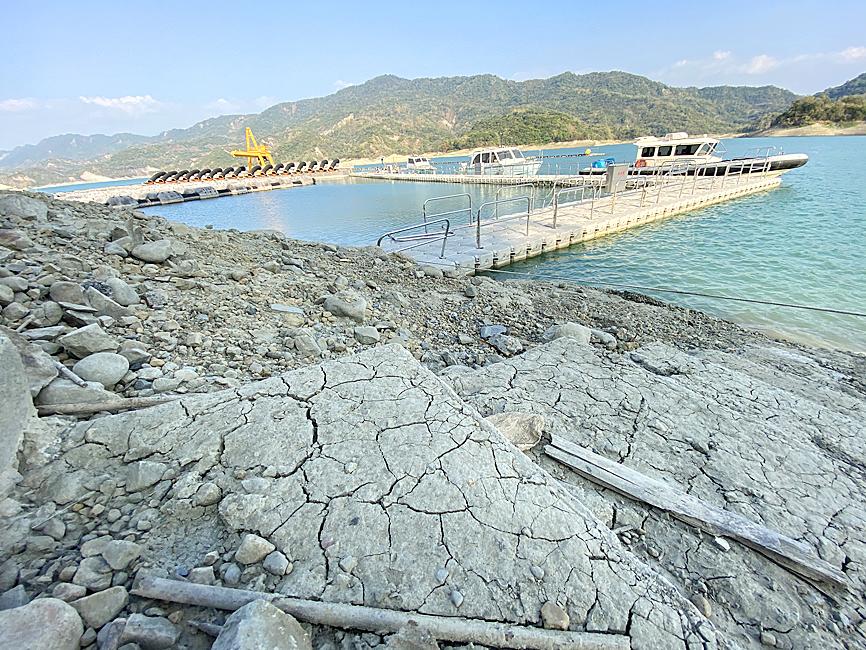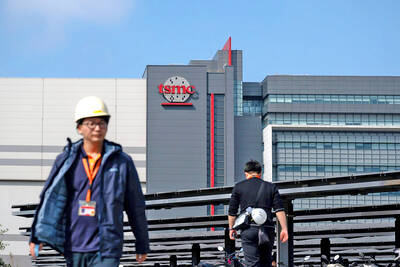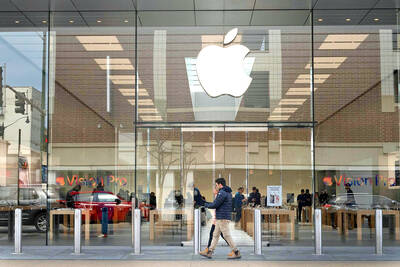The implementation of a surcharge mechanism on large water users is being “carefully structured,” Water Resource Agency Director-General Lai Chien-hsin (賴建信) told a news conference yesterday at the Ministry of Economic Affairs in Taipei.
Industries have different water usage patterns that need to be taken into account before such a surcharge can be levied, Lai said.
“Some industries will find it harder to reduce water usage than others,” Lai said. “It would not be fair to place the same surcharge across the board.”

Photo: CNA
The threshold for what would qualify as a large water user also remains to be determined, he said.
An amendment to the Water Act (水利法) in 2016 empowered the agency to levy a surcharge on industrial users that use more than 1,000m3 of water a day.
However, five years and more than 60 conferences later, there is still “no timeline” for implementation, Lai said.
“We have to take into consideration the nature of the business, whether it is during the wet or the dry season, and how much recycled water is being used,” he said. “Businesses that are operating with difficulty should also get a grace period.”
As a water shortage intensifies, business attitude toward a large water users’ surcharge has softened, Water Resource Agency Deputy Director-General Wang Yi-feng (王藝峰) said.
“They’re willing to pay a surcharge if they receive continued stable access to water,” Wang said.
Water in Taiwan is cheap compared with other countries, he said.
“A cubic meter of water is NT$10,” Wang said. “You can take a couple of baths with that if you do not fill up your bathtub all the way.”
The price of water is six times as much in some other Asian countries, he said.
“However, we have to be careful about raising prices,” he said. “We have to think of the impact on disadvantaged people.”
The ministry is planning a series of infrastructure projects to increase Taiwan’s water supply to combat unpredictable rainfall caused by climate change, Wang said.
The projects would cost a combined NT$160 billion (US$5.66 billion) over the next 10 years and would add 1 million tonnes to Taiwan’s annual water supply, he said.
“We need to clean the silt buildup in our dams, build new reservoirs, capture groundwater, and build reclamation and desalination plants,” Wang said.
While northern Taiwan no longer faces shortages, the “most difficult hour yet” is at hand for the rest of Taiwan, he said.
Miaoli County, Hsinchu city and county, and Taichung are on “orange alert” with round-the-clock water pressure reduction and mandatory 11 percent daily water use reduction for industrial users, he said, adding that the areas face a “red alert,” with rolling outages, if conditions continue to worsen.
The Zengwen Reservoir (曾文水庫), Taiwan’s largest, is at 15 percent capacity, he said.
Substantial rainfall is not expected until May, the beginning of the wet season.

Apple Inc has closed in on an agreement with OpenAI to use the start-up’s technology on the iPhone, part of a broader push to bring artificial intelligence (AI) features to its devices, people familiar with the matter said. The two sides have been finalizing terms for a pact to use ChatGPT features in Apple’s iOS 18, the next iPhone operating system, said the people, who asked not to be identified because the situation is private. Apple also has held talks with Alphabet Inc’s Google about licensing its Gemini chatbot. Those discussions have not led to an agreement, but are ongoing. An OpenAI

INSATIABLE: Almost all AI innovators are working with the chipmaker to address the rapidly growing AI-related demand for energy-efficient computing power, the CEO said Taiwan Semiconductor Manufacturing Co (TSMC, 台積電) yesterday reported about 60 percent annual growth in revenue for last month, benefiting from rapidly growing demand for artificial intelligence (AI) and high-performance computing applications. Revenue last month expanded to NT$236.02 billion (US$7.28 billion), compared with NT$147.9 billion in April last year, the second-highest level in company history, TSMC said in a statement. On a monthly basis, revenue surged 20.9 percent, from NT$195.21 billion in March. As AI-related applications continue to show strong growth, TSMC expects revenue to expand about 27.6 percent year-on-year during the current quarter to between US$19.6 billion and US$20.4 billion. That would

Apple Inc has been developing a homegrown chip to run artificial intelligence (AI) tools in data centers, although it is unclear if the semiconductor would ever be deployed, the Wall Street Journal reported on Monday. The effort would build on Apple’s previous efforts to make in-house chips, which run in its iPhones, Macs and other devices, according to the Journal, which cited unidentified people familiar with the matter. The server project is code-named ACDC (Apple Chips in Data Center) within the company, aiming to utilize Apple’s expertise in chip design for the company’s server infrastructure, the newspaper said. While this initiative has been

‘FULL SUPPORT’: Kumamoto Governor Takashi Kimura said he hopes more companies would settle in the prefecture to create an area similar to Taiwan’s Hsinchu Science Park The newly elected governor of Japan’s Kumamoto Prefecture said he is ready to ensure wide-ranging support to woo Taiwan Semiconductor Manufacturing Co (TSMC, 台積電) to build its third Japanese chip factory there. Concerns of groundwater shortages when TSMC’s two plants begin operations in the prefecture’s Kikuyo have spurred discussions about the possibility of tapping unused dam water, Kumamoto Governor Takashi Kimura said in an interview on Saturday. While Kimura said talks about a third plant have yet to occur, Bloomberg had reported TSMC is already considering its third Japanese fab — also in Kumamoto — which would make more advanced chips. “We are